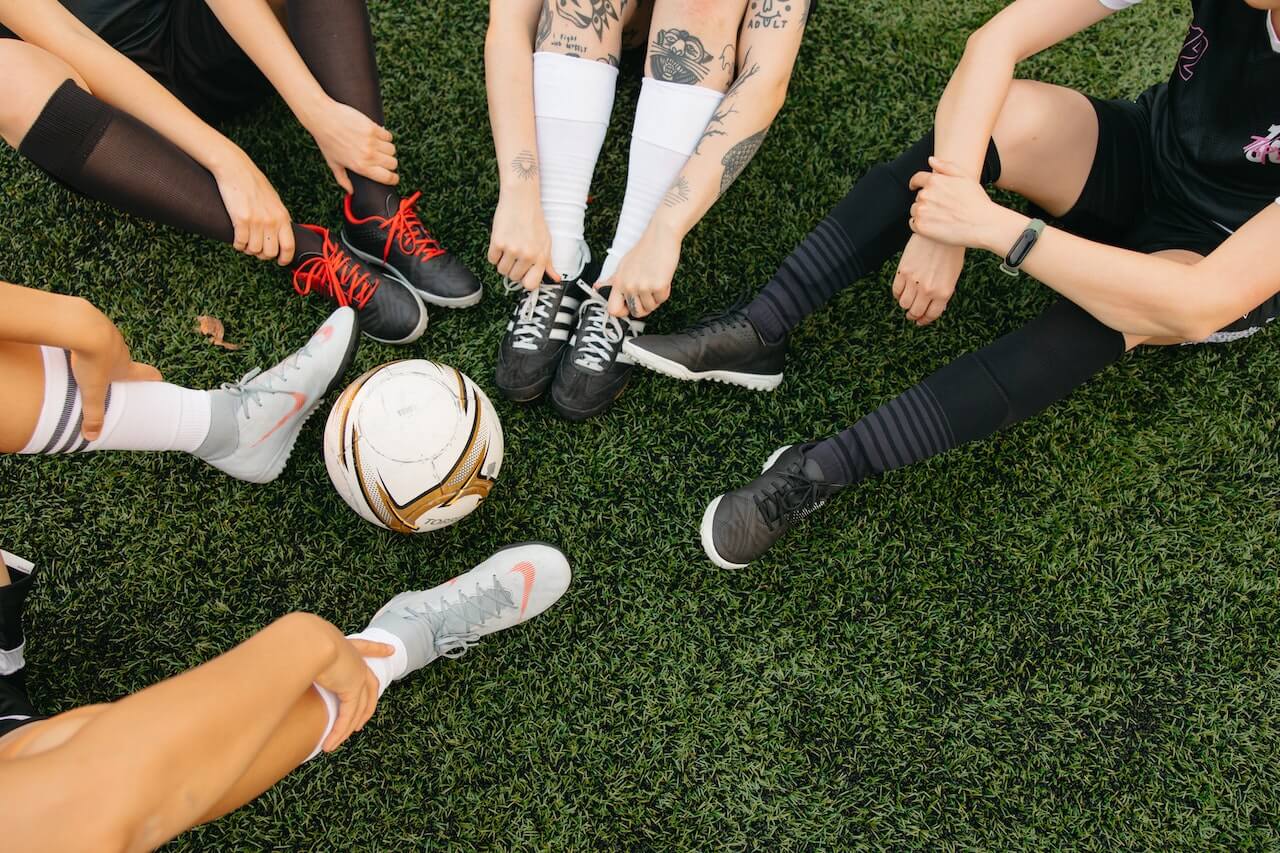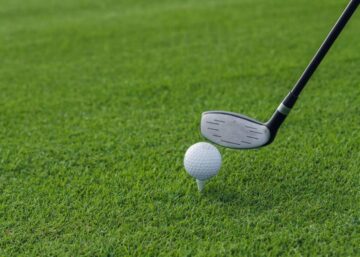Soccer shoes are a crucial piece of equipment for any player. They are designed to provide support, traction, and comfort on the field, helping players perform at their best. With so many different types of soccer shoes available, it can be difficult to know which ones to choose.
When selecting soccer shoes, it’s important to consider the player’s position, playing style, and the type of surface they will be playing on. For example, forwards may prefer shoes with a lightweight design and a focus on speed, while defenders may prefer shoes with more support and durability. Similarly, players who primarily play on turf may require shoes with specialized studs or cleats to provide better traction on the surface.
Additionally, soccer shoes are available in a variety of materials, from leather to synthetic materials. Each material has its own advantages and disadvantages, and players should consider their personal preferences and needs when selecting a material. Ultimately, the right soccer shoes can make a significant difference in a player’s performance on the field, helping them to stay comfortable, agile, and focused throughout the game.
History of Soccer Shoes
Soccer shoes, also known as football boots, have come a long way since their inception in the late 1800s. The first soccer shoes were made of heavy leather and had metal studs on the sole for traction on the muddy fields of the time.
As the game evolved and rules changed, so did the shoes. In the 1950s, Adidas introduced screw-in studs that could be changed depending on the weather and field conditions. This innovation allowed players to customize their shoes for optimal performance.
In the 1970s, Puma introduced the first soccer shoes with a synthetic upper, which was lighter and more durable than leather. This material became popular among players and is still used today.
The 1990s saw the introduction of new technologies in soccer shoes, such as air cushioning and carbon fiber plates. Nike’s Mercurial line, first released in 1998, was a game-changer in terms of design and performance. The shoes were lightweight and had a sleek, futuristic look that appealed to players and fans alike.
Today, soccer shoes continue to evolve with new materials, designs, and technologies. From kangaroo leather to knitted uppers, there are endless options for players to choose from. The goal remains the same, however – to provide the best possible performance on the field.
Types of Soccer Shoes
Soccer shoes, or cleats, are designed to provide traction and stability on the field. There are several types of soccer shoes to choose from, each with its own unique features and benefits. Here are the most common types of soccer shoes:
- Firm Ground (FG) Cleats: These are the most common type of soccer shoe and are designed for use on firm, natural grass surfaces. They typically have 12-15 studs that are evenly spaced for maximum traction and stability.
- Soft Ground (SG) Cleats: These shoes are designed for use on wet or muddy grass fields. They have longer studs that provide better traction in slippery conditions.
- Artificial Turf (AT) Cleats: These shoes are designed for use on artificial turf fields. They have shorter, rubber studs that provide traction on the harder, synthetic surface.
- Indoor Soccer Shoes: These shoes are designed for use on indoor soccer surfaces, such as gym floors or indoor turf. They have a flat, non-marking sole that provides good traction and stability on the indoor surface.
- Turf Shoes: These shoes are designed for use on artificial turf surfaces, such as those found in soccer domes or indoor soccer facilities. They have a flat, rubber sole that provides good traction on the turf surface.
When choosing a soccer shoe, it’s important to consider the type of surface you’ll be playing on, as well as your personal preferences for fit and style. With the right soccer shoe, you can improve your performance on the field and enjoy the game to the fullest.
Factors to Consider When Buying Soccer Shoes
When it comes to buying soccer shoes, there are several factors to consider to ensure that you get the right pair for your needs. Here are some of the most important factors to keep in mind:
- Playing surface: The surface you’ll be playing on will determine the type of studs you need on your soccer shoes. For example, firm ground studs are best for natural grass surfaces, while turf studs are better for artificial turf.
- Fit: It’s important to get a pair of soccer shoes that fit well and feel comfortable on your feet. Consider factors like width, arch support, and the overall shape of the shoe.
- Material: Soccer shoes can be made from a variety of materials, including leather, synthetic materials, and mesh. Each material has its own pros and cons, so consider which one will work best for you.
- Style: Soccer shoes come in a range of styles, from low-cut to high-top. Consider which style will provide the support and protection you need while still allowing you to move freely on the field.
By taking these factors into account, you can find a pair of soccer shoes that will help you perform your best on the field. Whether you’re a beginner or a seasoned pro, the right pair of soccer shoes can make all the difference in your game.
Top Brands of Soccer Shoes
When it comes to soccer shoes, there are many brands to choose from. Some are well-known for their quality and performance, while others are more budget-friendly. Here are some of the top brands of soccer shoes on the market:
- Nike: Nike is one of the most popular brands of soccer shoes. They offer a wide range of styles, from lightweight and flexible to sturdy and durable. Their shoes are known for their comfortable fit and excellent traction.
- Adidas: Adidas is another popular brand of soccer shoes. They offer a variety of styles and colors, and their shoes are known for their excellent durability and support. Adidas shoes are also known for their innovative technology, such as their Boost technology which provides extra cushioning and energy return.
- Puma: Puma is a well-respected brand in the soccer world. Their shoes are known for their sleek design and excellent performance. Puma shoes are also known for their comfort and support, making them a popular choice among soccer players.
- New Balance: New Balance is a newer player in the soccer shoe market, but they have quickly made a name for themselves. Their shoes are known for their excellent fit and comfort, as well as their durability and traction. New Balance shoes are also available in a wide range of styles and colors.
Of course, there are many other brands of soccer shoes to choose from, each with their own unique strengths and weaknesses. It’s important to do your research and find a brand that works best for you and your playing style.
Maintenance and Care for Soccer Shoes
Soccer shoes are an essential part of any player’s equipment. They are subjected to intense wear and tear during games and training sessions. Proper maintenance and care of soccer shoes can extend their lifespan and ensure they perform at their best. Here are some tips on how to maintain and care for soccer shoes:
Cleaning
After every game or training session, soccer shoes should be cleaned to remove dirt, mud, and grass stains. Use a soft-bristled brush or cloth to gently scrub the shoes. Avoid using harsh chemicals or detergents as they can damage the shoes. Instead, use a mild soap and warm water to clean the shoes. Allow the shoes to air dry before storing them.
Storage
Proper storage of soccer shoes is important to maintain their shape and prevent damage. After cleaning, allow the shoes to air dry completely before storing them. Do not expose them to direct sunlight or heat as this can cause the shoes to warp or crack. Store the shoes in a cool, dry place away from moisture and humidity. Avoid storing them in a plastic bag as this can cause the shoes to become moldy.
Replacing Cleats
Cleats are an important part of soccer shoes as they provide traction and stability on the field. Over time, cleats can become worn down or damaged. It is important to regularly check the condition of the cleats and replace them if necessary. Most soccer shoes have replaceable cleats, which can be easily removed and replaced with new ones. Replace cleats before they become too worn down to prevent injuries and maintain optimal performance.
Protective Sprays
There are several protective sprays available on the market that can help protect soccer shoes from water, dirt, and stains. These sprays create a barrier on the surface of the shoes, making them more resistant to damage. However, it is important to follow the manufacturer’s instructions when using these sprays as some may not be suitable for certain types of shoes.
By following these tips, soccer players can extend the lifespan of their soccer shoes and ensure they perform at their best on the field.
Conclusion
After reviewing the top soccer shoes on the market, it is clear that there are many excellent options available for players of all levels. Whether you are a beginner or a professional, there is a shoe that will meet your needs and help you perform at your best on the field.
When choosing a soccer shoe, it is important to consider factors such as fit, comfort, traction, and durability. It is also important to choose a shoe that is appropriate for your position and playing style. For example, forwards may prefer a shoe that is lightweight and provides excellent traction for quick movements, while defenders may prefer a shoe that is more durable and provides better protection.
Overall, the Nike Mercurial Superfly 8 Elite is a top choice for players who want a shoe that offers excellent performance, comfort, and style. However, other shoes such as the Adidas Copa Mundial and the Puma Future Z 1.1 also offer excellent features and should not be overlooked.







